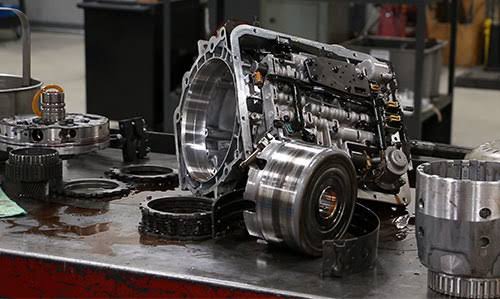If you’re diving into car repairs, upgrades, or just trying to understand your vehicle a bit better, you’ve probably come across the term 4L60E transmission. But what exactly is it, and why is it such a big deal in the automotive world? Whether you’re a DIY mechanic or just curious about what makes your ride tick, this blog post will break down everything you need to know about the 4L60E transmission in simple, easy-to-understand language.
What Is the 4L60E Transmission?
Let’s start with the basics. The 4L60E transmission is an automatic transmission made by General Motors (GM). It’s been used in a wide range of GM vehicles, from trucks and SUVs to performance cars, since the early ’90s. The name might sound complicated, but it actually tells you a lot about the transmission:
- 4: It has four forward gears.
- L: It’s for longitudinal engines (the kind that runs front to back, like in trucks).
- 60: This refers to the transmission’s torque capacity, meaning it can handle up to 6,000 lbs of gross vehicle weight.
- E: The “E” stands for electronic, meaning it’s controlled by your vehicle’s computer system rather than mechanical linkages.
Why Is the 4L60E So Popular?
The 4L60E is like the Swiss Army knife of transmissions—it fits into a lot of different vehicles and does its job well. You’ll find it in everything from Chevy Silverados and Tahoes to Pontiac Firebirds and Camaro Z28s. It’s known for being reliable, durable, and easy to work on, which is why so many car enthusiasts and mechanics love it.
Plus, because it’s electronically controlled, it can be easily tuned for better performance or fuel economy. This makes it a favorite for people who love to tweak and customize their rides.
Common Problems with the 4L60E Transmission
No transmission is perfect, and the 4L60E has its share of common issues. But don’t worry—knowing what to look for can save you a lot of headaches down the road. Here are some problems people often run into:
- Slipping Gears: If your car feels like it’s struggling to shift or suddenly jumps out of gear, your 4L60E might be slipping.
- No Reverse: This is a classic issue with the 4L60E. If you lose reverse gear, it could mean worn-out clutches or a broken reaction shell.
- Harsh Shifting: If your car jerks when it shifts, there might be a problem with the valve body or solenoids inside the transmission.
- Overheating: Like any transmission, the 4L60E doesn’t like getting too hot. Overheating can cause internal damage and lead to bigger problems down the line.
Pro Tip: Regular maintenance—like changing the fluid and filter—can help you avoid many of these issues.
How to Maintain Your 4L60E Transmission
Keeping your 4L60E in top shape isn’t rocket science. Here are some simple tips to help extend its life:
- Check the Fluid: Make sure your transmission fluid is at the right level and doesn’t look burnt or dirty. Transmission fluid should be bright red.
- Change the Filter: A clogged filter can cause all kinds of issues, so swap it out regularly (usually every 30,000 miles).
- Keep It Cool: Heat is the enemy of transmissions. Installing an aftermarket transmission cooler can help keep temperatures in check, especially if you tow heavy loads.
- Listen to Your Car: If you hear strange noises or feel odd shifts, don’t ignore them! Catching problems early can save you from expensive repairs.
Is the 4L60E Transmission Right for You?
If you’ve got a GM vehicle from the ’90s or 2000s, there’s a good chance you already have a 4L60E under the hood. It’s a solid, dependable transmission that can handle a lot of abuse—whether you’re towing a trailer, hitting the highway, or cruising around town.
But if you’re thinking about swapping one into a different vehicle, make sure it matches your engine and driving needs. The 4L60E is great for light to medium-duty applications, but if you’re building a high-performance drag car or towing super heavy loads, you might need something beefier.
Conclusion: Why the 4L60E Transmission Stands Out
The 4L60E transmission is a workhorse. It’s reliable, easy to maintain, and versatile enough for a wide range of vehicles. Sure, it’s not perfect—no transmission is—but with proper care, it can last for hundreds of thousands of miles. Whether you’re a seasoned mechanic or just a car owner trying to understand what makes your vehicle tick, knowing about the 4L60E can save you time, money, and frustration.
FAQs About the 4L60E Transmission
1. What vehicles use the 4L60E transmission?
You’ll find the 4L60E in many GM vehicles, like the Chevy Silverado, Tahoe, Suburban, Camaro, and Pontiac Firebird, as well as some GMC and Cadillac models.
2. How do I know if my transmission is a 4L60E?
Check the transmission pan—if it’s rectangular with 16 bolts, it’s likely a 4L60E. You can also look for the model number on the transmission housing.
3. How long does a 4L60E transmission last?
With proper maintenance, a 4L60E can last anywhere from 150,000 to 200,000 miles or more. Regular fluid changes and keeping it cool are key to longevity.
4. Can I rebuild a 4L60E transmission myself?
If you’re handy with tools and have some mechanical experience, rebuilding a 4L60E is possible. But it’s a complex job, so many people prefer to leave it to professionals.
5. What’s the difference between a 4L60 and a 4L60E?
The big difference is the “E”—the 4L60E is electronically controlled, while the 4L60 uses hydraulic controls. This means the 4L60E relies on your vehicle’s computer for shifting.
6. How much does it cost to replace a 4L60E transmission?
Prices vary depending on whether you buy new, used, or rebuilt. On average, expect to pay between $1,500 and $3,000 for parts and labor.




